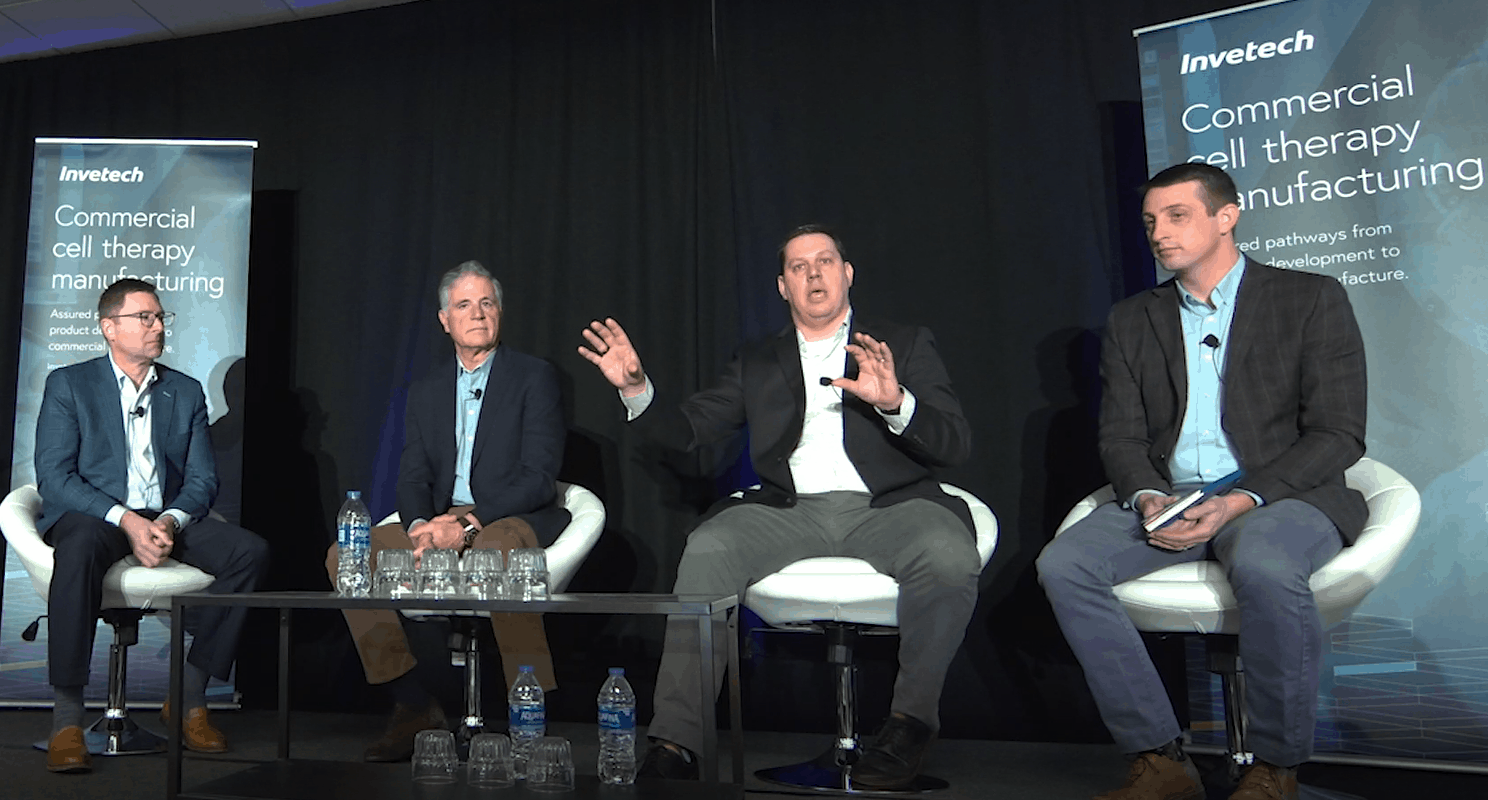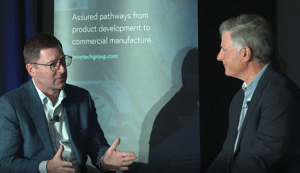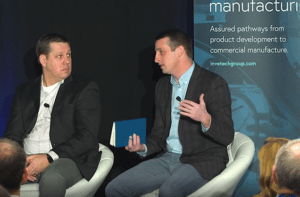The commercial success of a cell-based therapeutic depends on a scalable, automated manufacturing process. But how can companies ensure their manufacturing processes are up to meeting the needs and market demand of the rapidly evolving cell therapy field? Our annual breakfast briefing at the Phacilitate Leaders World conference in Miami tackled this and other current topics with a panel of industry luminaries.
David Hodl, Invetech’s Head of Business Development, Cell Therapy who chaired the panel, opened the discussion by highlighting one of the prevalent topics of the conference: how to scale up. With the Alliance for Regenerative Medicine estimating up to half a million patients in the US alone in the coming years, how can cell therapy companies meet market demand?
Hodl said, “That very much becomes a question for companies that either have an approved product or they’re tracking toward approval – what do we do with our manufacturing process? We have approval, but now, how do we meet those market challenges and how do we meet the manufacturing needs to treat 500,000 patients in the near term?”
The panel, comprising of Ken Kotz, Associate Director of Drug Product Enabling Technologies (bluebird bio), Isaac Erickson, Director of Bioprocess Engineering (DiscGenics) and Greg Bonfiglio, Founder and Managing Partner (Proteus, LLC), discussed their vision for the coming era of industrialized cell therapy production.

 Greg Bonfiglio from Proteus, LLC shared his experiences going from a fairly high-touch linear manufacturing process to a closed process. “We now have a universal cell line that we will be producing under GMP conditions. We’ve already produced it and have product from it. We need to develop a bioreactor that gets us there, that can produce that line and the products from that line on economic basis. We’re struggling with those manufacturing issues, but they’re core to the success of our business and our long-term business plan.”
Greg Bonfiglio from Proteus, LLC shared his experiences going from a fairly high-touch linear manufacturing process to a closed process. “We now have a universal cell line that we will be producing under GMP conditions. We’ve already produced it and have product from it. We need to develop a bioreactor that gets us there, that can produce that line and the products from that line on economic basis. We’re struggling with those manufacturing issues, but they’re core to the success of our business and our long-term business plan.” Erickson said, “One way we look at it, as we’re integrating multiple steps of a process, is to use the base consumable that is the more complex piece ‘as-is’ and then having custom transfer sets that are simpler to piece together. Any simplification we can do to that helps with the supply chain, we’ll look at that.”
Erickson said, “One way we look at it, as we’re integrating multiple steps of a process, is to use the base consumable that is the more complex piece ‘as-is’ and then having custom transfer sets that are simpler to piece together. Any simplification we can do to that helps with the supply chain, we’ll look at that.”

